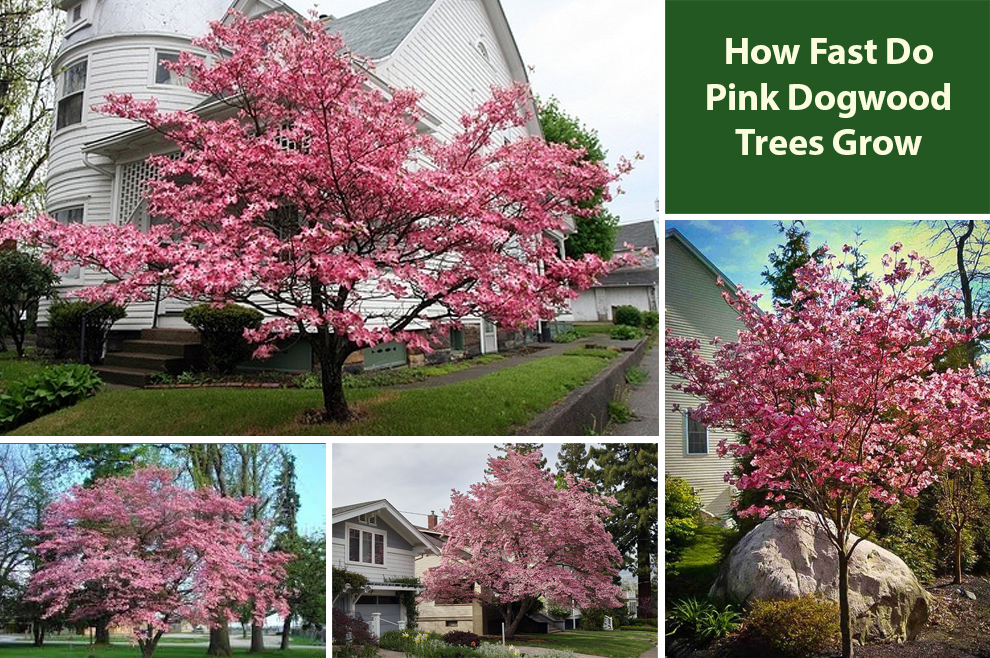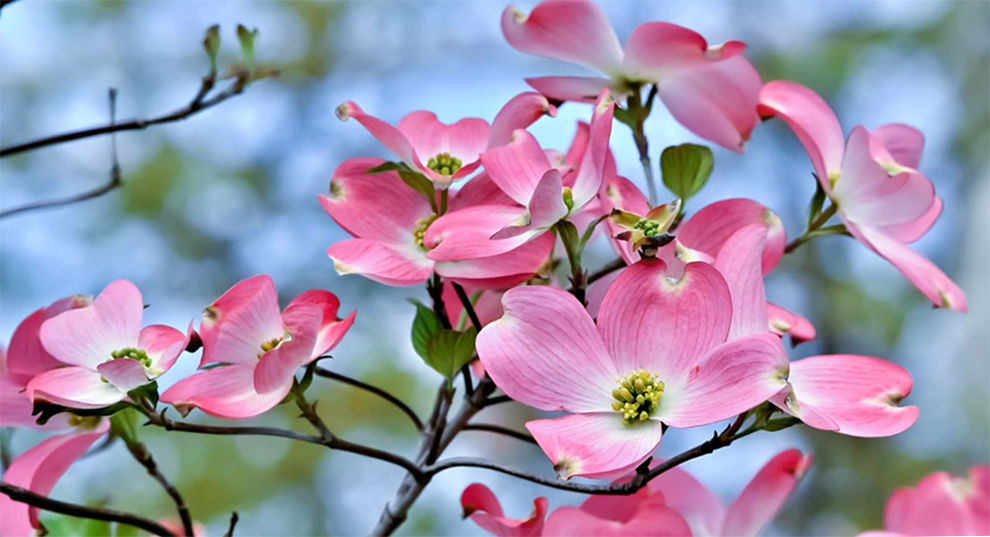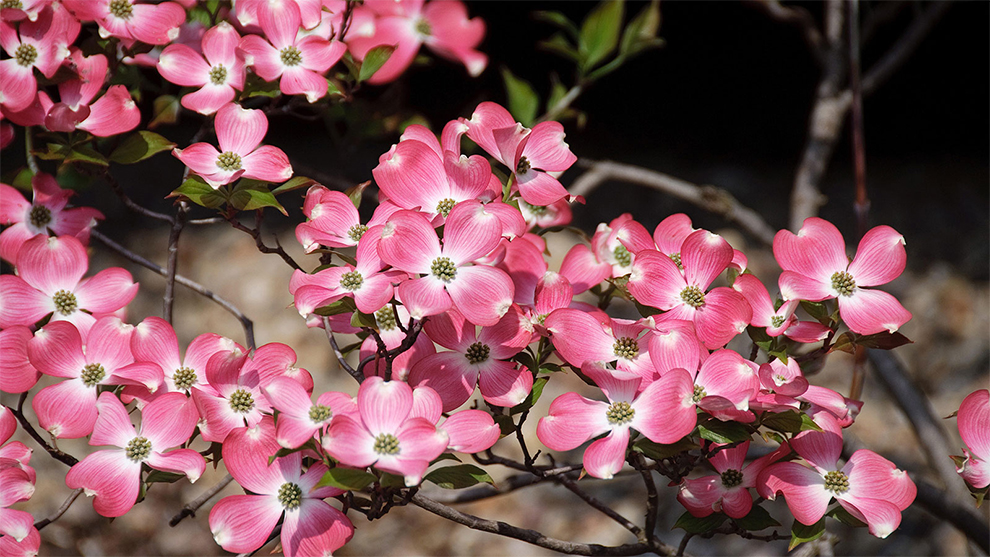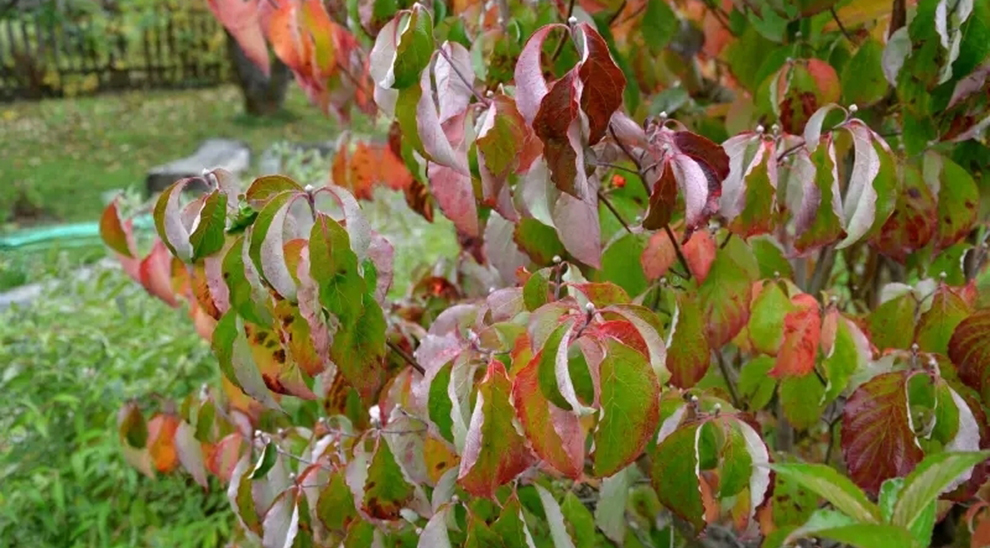Pink Dogwood Tree Growth Rate – How Fast It Grows?
Pink dogwood trees have beautiful pink to reddish flowers. They have a moderate growth rate of maximum two feet per year.

Pink Dogwoods have additional attributes that amplify their desirability in landscaping endeavors.
Beyond their splendid pastel flowers, which grace the tree with ephemeral beauty for two to four weeks every spring, these trees add a year-round appeal.
During the remaining months, the Pink Dogwood’s verdant foliage works as a captivating backdrop, transitioning to purplish hues as autumn arises.
In addition, the reddish berries further amplify their look, attracting plenty of birds and butterflies to the landscape.
Let’s find out how fast does a Pink Dogwood tree grow?
The Pink Dogwoods have a relatively moderate growth rate, allowing them to establish themselves as prominent trees within a landscape.
These trees depict a commendable development pace, with an approximately annual increase in girth and height of about one to two feet.
Such progression ensures the Pink Dogwood becomes a robust and substantial addition to any outdoor environment.
Pink Dogwood Trees Overview
| Scientific Name | Cornus florida f. rubra |
| Size | 15 to 30 feet tall and a similar width |
| Growth Rate | Moderate |
| Sunlight | Partial |
| Soil | Moist but well-drained, slightly acidic soil |
| Water | Average |
| Bloom Time | Spring |
| Lifespan | Up to 80 years |
How Fast Do Pink Dogwood Trees Grow?
Among different types of dogwood trees, Pink Dogwoods demonstrate a moderate to swift growth rate, allowing them to establish themselves as prominent landscape features within a relatively brief period.
They have an impressive progression, with an annual expansion in girth and height of approximately a foot or more.
Their vigorous development ensures the emergence of aesthetically appealing and substantial additions to the outdoor surroundings.
But please note that the exact growth rate may vary depending on the soil quality, the amount of sun received, and the overall dogwood care provided.
By a conducive environment and offering apt nurturing, Pink Dogwood trees can significantly thrive, depicting their captivating beauty and infusing the surrounding landscape with their appealing charm.
How Long Does It Take A Pink Dogwood To Bloom?

Pink Dogwood usually needs five to seven years before flowering in full abundance.
The positive attribute of this extended timeframe is that the tree’s delayed bloom hints at its well-being and contentment rather than any underlying stress.
Once it starts blooming, the Pink Dogwood dazzles with its profusion of delicate pastel flowers, a spectacle lasting for approximately two to four weeks every spring.
This stunning floral display is a delightful reward for the patience invested in nurturing the tree. The Pink Dogwood tree can continue blooming splendidly for several years with proper care.
Related: Dogwood Tree Growth Rate | How Fast Do Kousa Dogwood Tree Grow | White Dogwood Growth Rate| Red Twig Dogwood Growth Rate
How Long Does It Take For A Pink Dogwood Tree To Mature?

On average, Pink Dogwood usually takes around twenty-five years to attain full maturity.
During this while, the Pink Dogwood tree undergoes significant development and growth, establishing a robust root system, branching structure, and trunk.
As the tree matures, it grows in size and develops the ability to yield a substantial number of blooms annually. Please note that the exact timeline for maturity may vary depending on the environmental factors, the care offered, and the many genetic attributes.
But with proper patience and cultivation, a Pink Dogwood tree will eventually reach its mature form in 25 years, becoming a cherished and stunning part of the landscape.
Can Pink Dogwoods Take Full Sun – Understanding This and Their Ideal Growing Conditions…
Pink Dogwood tree growth rate is fast, but it will only materialize when the plant gets conducive growing conditions.
The plants thrive in partial shade or dappled sunlight. Of course, they can endure some direct sunlight, especially in the late afternoon and morning, but excessive exposure to full sun for prolonged periods may cause stress to the tree.
Ideally, Pink Dogwoods do best in locations that keep them guarded against the harsh afternoon sun and offer a balance of sun and shade across the day.
You can achieve it by growing these Dogwood varieties in filtered light, such as in spots that receive partial shade from other vegetation or structures or underneath the canopy of larger trees.
As for the soil, Pink Dogwoods cherish slightly acidic, well-draining soil with a pH ranging between 5.5 and 6.5.
Amending the soil with organic matter, such as peat moss or compost, can better drainage and accentuate the soil’s acidity levels. Proper watering is vital for the Pink Dogwood tree’s health. They like moist but not waterlogged soil.
Regular watering, typically during dry periods, is imperative, especially during the tree’s establishment phase. Adding a thick layer of organic mulch around the tree’s base can help regulate soil temperature and retain moisture.
Though Pink Dogwood is a low-maintenance plant, you must provide them with adequate care. It also includes regular pruning to maintain shape and remove damaged dead or crossing branches.
Further, you can apply a balanced plant food exquisitely formulated for trees during early spring. It ensures the plant receives vital nutrients.
Hence, by growing the Pink Dogwood in a suitable location with well-drained soil, partial shade, proper watering, and maintenance, Pink Dogwood trees can flourish and thrive.
Do Dwarf Pink Dogwood Trees Grow Differently?
Yes.
Dwarf Pink Dogwood demonstrates a different growth characteristic than the standard-sized Pink Dogwood tree.
As is apparent, the Dwarf varieties are compact in stature and have a smaller growth habit. They are exquisitely cultivated and bred to remain smaller, making them suitable for containers, smaller gardens, or areas with limited space.
Dwarf Pink Dogwood’s growth rate is usually slower than its larger counterparts. The standard Dogwoods grow at a moderate to fast pace.
However, the dwarf varieties tend to develop relatively more slowly, contributing to their compact form.
They reach their maximum height of approximately eight to ten feet, significantly smaller than the average height in standard trees.
Their smaller size also influences their overall shape and branching structure. They have a more rounded and denser crown, typically with branches that grow closer to the ground.
This compact form makes them visually appealing and ideal for focal points or ornamental accents in landscapes or gardens.
Despite their smaller size, dwarf Pink Dogwood trees still yield the same iconic pink flowers their standard counterparts are known for. They offer the same charm and beauty, albeit on a smaller scale.
As for the growing conditions, dwarf Pink Dogwood trees need similar environmental considerations and care as a standard Pink Dogwood tree.
They thrive in dappled sun or partial shade and cherish well-drained, slightly acidic soil. Regular pruning, proper feeding, and adequate watering are vital for their health.
Pink Dogwood In Fall – Do They Change Their Appearance?

Yes. They do.
Pink Dogwood trees undergo a noticeable transformation in appearance during the fall. While they are known for their stunning pink blooms in spring, their foliage also adds to the visual appeal of these trees during autumn.
The Pink Dogwood tree’s green leaves gradually transition to vibrant hues in fall. The foliage takes on shades of reddish, burgundy, and purple tones, creating a captivating display of autumn colors.
This transformation adds a new beauty dimension to the tree and its landscape.
The precise Pink Dogwood fall color timing and intensity may vary depending on weather conditions, climate, and the specific cultivator growth.
But it is typically expected that Pink Dogwoods will depict their fall colors sometime in the later part of the season.
This colorful foliage in the fall accentuates its aesthetic appeal and is a natural attraction for butterflies and birds.
The reddish berries that usually accompany the fall foliage also offer a food source for wildlife, further amplifying the tree’s ecological value.
